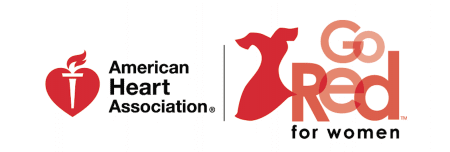When Vicky King tried to put her spoon to her mouth while eating, her hand fell limp to the table. It was the second time in a few weeks the then-21-year-old from Magnolia had experienced strange symptoms: garbled speech and a tingly, numb feeling on one side of her body. Both times King chalked up the symptoms to the complicated migraines she had suffered with her entire life. That day was no different.
“I struggled through getting ready for work, and I went to my internship and worked all day,” she says, recalling how she felt cold and “off” the entire day. “I ran seven miles every day. That night, I only ran four miles and then threw up after.”
But because of her age and history with migraines, King was stunned when an MRI revealed that her mysterious symptoms were the result of not one, but two strokes stemming from a hole in her heart.
Surprisingly, King’s diagnosis isn’t an anomaly. In the United States, stroke is now more common in women than men, according to the American Heart Association. Stroke is also the third-leading cause of death for women, and each year strokes kill twice as many women as breast cancer.
Here’s what women need to know to cut their risk – and stay alive.
It’s A Numbers Game
The candles on your birthday cake, what you see on the scale, the reading on the blood pressure cuff – all those numbers matter when it comes to factoring your stroke risk.
“The common risk factors for everyone are hypertension, diabetes, high cholesterol, smoking and family history of stroke, as well as advancing age,” says Virtua neurologist Carole Thomas, MD. “With aging comes more disease and more deterioration of the blood vessels.”
As people get older, they also run the risk of developing atrial fibrillation, which is yet another risk factor, says Thomas. Atrial fibrillation, she explains, is when one of the chambers of the heart does not beat normally. “It’s easier for that area to form a clot, and the first stop for that clot would be the brain.”
But nearly a quarter of strokes occur in people under the age of 65, according to the American Heart Association. That’s especially scary, since young women like King may be more likely to ignore stroke symptoms because they think they’re too young to suffer from one.
“There are women who have out-of-control blood pressure, diabetes and elevated cholesterol in their 20s and 30s,” says Thomas. “A stroke could happen at a younger age if they happen to have those diseases and don’t manage them.”
Babies & Birth Control
Women who may think of themselves as very healthy might be surprised to know their childbearing years can be deadly.
“During pregnancy, especially in the third trimester, women can clot more, and some of that has to do with hormonal factors and the body getting ready for birth,” says Thomas. “That’s one factor for ischemic stroke, which is a stroke from a blood clot. Another factor, again in the third trimester, is preeclampsia, which is elevated blood pressure that can lead to both stroke and hemorrhage in the brain.”
Of the nearly four million women who give birth each year, experts estimate that 6 to 10 percent of them develop preeclampsia, which doubles the risk for stroke and quadruples the risk for high blood pressure later in life.
Thomas says that although it’s rare, preeclampsia can also strike after birth. “The risk continues for the first six weeks postpartum. The changes that happen metabolically in the body around birth are pretty extraordinary – your risk doesn’t just stop when the baby comes out.”
However, pregnant and postpartum women aren’t the only ones at risk – the more than 10 million American women who take the pill may be twice as likely to have a stroke than those who don’t.
The risk seems to be higher in women who have other habits linked with a greater stroke risk – namely smoking. One of the best things women who take the pill and smoke can do isn’t quitting the pill, says Thomas. “Stop smoking. That’s a big factor.”
Migraine – Or More?
A chronic migraine sufferer since first grade, King wrote off her first mini-stroke, often called a transient ischemic attack or TIA, as just another migraine. Her father also suffered from complicated migraines, so her family didn’t think much of it. Little did she know that TIA would set her up for the big stroke she’d ultimately experience several weeks later.
A number of studies have indicated that people who suffer from migraines are at greater risk of stroke, though Thomas Mirsen, MD, a neurologist at Cooper University Health Care, says the highest risk is in “people who suffer from complicated, or hemiplegic, migraines.”
These migraines are usually accompanied with aura symptoms – intense head pain, speech impairment, nausea, and sensitivity to light and sound – that are very similar to the symptoms of strokes and TIAs. The National Institute of Neurological Disorders and Strokes estimates that migraines are three times more common in women than men, so knowing the difference between the two medical conditions is key for women.
“When something is happening to your brain, you may not realize you’re having a problem,” says Thomas. “Or you might think, ‘Well, I slept on my arm funny. I’ll go back to sleep.’ That’s how people end up not getting the help they need off the bat. It’s very important for family members and the general population to understand stroke signs. A lot of the time it’s not the patient, but the family members or people around them who notice something’s not right, and they need to act on it right away.”
Lasting Damage
“The main thing people don’t know is many people don’t get better following a stroke,” explains Mirsen. “Part of the reason, perhaps why people don’t come to the hospital sooner, they don’t recognize the degree of what damage strokes can cause.”
The long-term effects, says Mirsen, can range from weakness and vision changes to speech problems and memory loss. Even after months of physical therapy, King says she’s still feeling the impact of her strokes, both physically and emotionally.
“I had constant vertigo from it, and I had to undergo a series of tests to see if it was from the migraines or the stroke. Five years later, it’s still following me around. For the most part, I’m extremely lucky I’ve mostly bounced back to myself,” says King.
“I sometimes struggle with my short-term memory. I’ll stand there, stare at my night table and think, ‘Did I take my medication?’ Or I can’t tell you how many times I’ve rewashed my hair in the shower, because I can’t remember if I did already.”
Every Second Counts
When it comes to a stroke, the clock is ticking – both in terms of stopping the stroke and preventing further damage.
“Usually, the onset of stroke symptoms or a TIA is very sudden,” says Mirsen. “The difference between a TIA and a stroke is that TIAs last for a brief time and go away. But we know through MRI scans, the longer stroke symptoms persist – even if it’s a TIA – the more likely it is there’s permanent damage to the brain you can see on an image, even if the person makes a full recovery.”
Time also matters, explains Mirsen, because patients who are able to get to the hospital quickly are good candidates for a drug that can reverse the stroke, but only about a quarter of people experiencing a stroke come in early enough to receive treatment.
“We have a clot-busting agent called TPA that helps reverse strokes, but it works best within the first three hours of the onset of symptoms,” he says. “If you’re experiencing stroke symptoms, don’t call your doctor or your spouse – call 911.”
Go Red for Women
Join hundreds of women at the American Heart Association’s Go Red for Women luncheon on April 28 at The Mansion in Voorhees. The popular event includes health workshops on heart disease and stroke, plus a luncheon where Dr. Perry Weinstock of Cooper University Health Care and Kyle Jamaitis of Abbot will be honored. Program runs from 10 am to 2 pm and tickets cost $150. For more information, visit SouthernNJGoRedLuncheon.heart.org.















